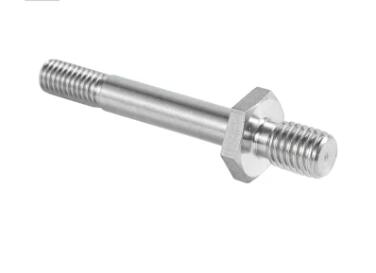What are the various types of bolt heads
2023-10-31
Bolt heads come in various shapes and types, each designed for specific applications and methods of tightening or loosening. Here are some of the common types of bolt heads:
1. Hex Head (Hexagonal Head): Hex heads are the most prevalent and recognizable type. They have a six-sided shape, allowing the use of a hex key (Allen wrench) or a socket wrench for tightening or loosening. Hex bolts are widely used in a variety of applications.
2. Square Head: Square heads have a four-sided shape and are typically used in heavy-duty applications where high torque is required. They are suitable for use with a square socket or wrench.
3. Round Head: Round heads have a circular shape with a flat top. They are used when a smooth, low-profile head is desired. Round-headed bolts are often seen in furniture assembly and decorative applications.
4. Pan Head: Pan heads have a slightly rounded top and are used in applications where a low-profile head is needed, but with more surface area for distributing clamping force. They are commonly used in electrical and electronic equipment.
5. Oval Head: Oval heads have an elliptical shape and a countersunk profile. They are used when a flush or countersunk appearance is desired. Oval head bolts are often used in woodworking and furniture assembly.
6. Button Head: Button heads have a rounded, domed shape and a low profile. They are often used in applications where a smooth and aesthetically pleasing appearance is important. Button head bolts are common in equipment and machinery.
7. Socket Head Cap Screw (Socket Head): Socket head cap screws have a cylindrical head with a socket or hexagonal recess for use with an Allen wrench or socket wrench. They provide a high-strength connection and are commonly used in machinery and automotive applications.
8. Flat Head (Countersunk Head): Flat heads have a conical shape with a flat top. They are designed to be countersunk into the material, providing a flush and smooth surface when tightened. Flat head bolts are widely used in woodworking and construction.
9. Hex Washer Head: Hex washer heads combine the features of a hex head and a washer. They have a built-in flange (washer) under the head, which distributes clamping force and provides some sealing capabilities. These bolts are used in applications where a secure and weather-resistant connection is needed.
10. Truss Head: Truss heads have a low, rounded profile with a wide, shallow head. They are designed for applications requiring a low-profile head with a larger load-bearing surface. Truss head bolts are often used in sheet metal and wood assemblies.
11. Tee Head (T-Head): Tee heads have a T-shaped profile, with a long stem that fits into T-slots or T-nuts in various machinery and equipment. They are used for securing components in machine tooling.
12. Flange Head: Flange heads have a built-in flange (washer) under the head, providing a wide load-bearing surface and additional protection against loosening due to vibration. Flange head bolts are used in automotive and industrial applications.
13. Hanger Head: Hanger heads have a unique, rounded shape designed for use with hanger wires or threaded rods. They are commonly used in overhead applications, such as suspending pipes or electrical conduits.
14. Knurled Head: Knurled heads have a textured, knurled surface for hand-tightening without the need for tools. They are often used in applications where frequent adjustments are required.
These various types of bolt heads offer versatility and are chosen based on the specific requirements of the application, including torque capacity, appearance, and ease of use.



